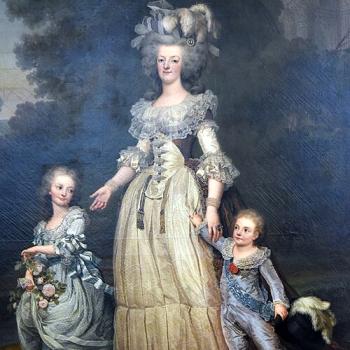
Have you ever sat down to read a John Updike novel or John Cheever story and asked yourself—”I’m no upper-class WASP. No one in my family talks like this. My parents never had any affairs. And if they did, they didn’t talk about it. What’s the point of this?” Italo-Slavic-American of non-elite stock that I am, I’ve been there. We did a lot of yelling and hugging and threatening one another. I ate buttered Eggo waffles and drank Pepsi for breakfast for the better part of a decade. Our dog ate Italian ices and bit me regularly. I spent weekends with my grandmother, who cleaned houses, and wouldn’t let me leave without enough food to burst your belly (or put hair on your chest, as she liked to say). In all those years, no one ever made a wry comment or raised an eyebrow quizzically. I guess we just weren’t all that droll.
At the same time, I’ve always had a weak spot for the claustrophobia of the one-room movie. I grew up on Saw (2004), first nurtured a love of stylish horror with Wait Until Dark (1967), and became (with some help from my mother and her mother, of gut-busting fame) a Hitchcock obsessive, devoted to Rope (1948), Dial M for Murder (1954), and Rear Window (1954). But these films largely rely on external tensions and pressures (murders, above all) to drive their sense of unease. They aren’t drawing room plays; they don’t just trap you between four walls with a couple annoying bourgeois folks and call it a day.
Rainer Werner Fassbinder’s The Bitter Tears of Petra von Kant (1972) is an oddity: a movie about rich people crying about their problems that is actually about class. It squares the circle, opens (if you will) the chamber melodrama up to the hyphenated-American. The film centers on the titular Petra von Kant (Margit Carstensen), a twice-divorced fashion designer, who falls in love with a young, working-class girl (turned model), Karin (Hannah Schygulla). Always seen but never heard is Marlene (Irm Hermann), Petra’s maidservant, who seems to do absolutely everything for her, from cleaning to answering the door to designing clothing. We never leave her positively 70s Baroque bedroom, bedecked with Michelangelo-esque wall paintings, exposed wooden beams, and shag—tons and tons of shag. Throughout the movie, Petra changes her outfit and wig too, using her clothing to reflect her mood [and at one point putting on what must have been the inspiration for Princess Leia’s armor bikini in Return of the Jedi (1983)].
The first hour or so is deliciously boring. Well, that’s an overstatement. It’s a slow revelation of Petra’s personality by way of several emotionally charged conversations with friends and family. She seems self-important, catty, and disrespectful—in a word, vain. At this point, the movie flows on like honey—laboriously and sickeningly after too long. Fassbinder, however, is faking us out. He’s giving us a typical chamber melodrama, luring us in. Halfway through, Karin shows up. Petra promises her the world, wanting to keep her for herself, deliciously taking in stories of her violent, impoverished family (“I can fix her,” you can almost hear our protagonist say). We feel hints of Svengali here—and why not, since Petra seems so unabashedly uncaring about other people and their needs. Karin has a husband abroad, but she can’t pass up this deal. Don’t look a gift horse in the mouth.
When they start living together, the tables turn; we see Petra tormented by a successful Karin, who openly flaunts her infidelities with men. By the final act, Fassbinder shows us a defeated Petra, nervously sitting on the floor next to a telephone. We surmise that Karin has left her and is now quite a bit more famous than she is. Worst of all (and oh so typically melodramatically), it is Petra’s birthday. Her mother, friend (from the first act), and daughter all come to check in on her, and, of course, find her a hot mess. Were this a typical movie, it might end here—Petra, hoisted by her own petard, the seductress seduced, the abuser abused. Delicious and perhaps satisfying, yes, but in an unself-consciously bourgeois way.
Did you forget about Marlene? The final scene sees her pacing back and forth past a collapsed Petra, chucking her things in a suitcase, and preparing to leave forever. Throughout the film, Fassbinder holds the camera on Marlene, or zooms in on her at the end of a scene, or pans away from the action to her, quietly working while her boss moans and cries. She is never the center of the movie, and yet Fassbinder always centers her. In other words, he constantly ironically cuts at the very foundation of his own film—the pressing emotional problems of the wealthy and successful. For all Petra’s crying, she stays rich. She’s never in any danger. Her problems involve the emotions, a lover-betrayer and the pitfalls of emotional dependence. She has the time for such tragedies only because Marlene does all her work for her. Petra’s tears can fall day long because Marlene’s hands scrub the floors and paint at the easel. The real problem is the kept servant, the woman who has no voice (one line in the whole movie!), the hard-working backbone of the very society we bother getting so melodramatic about—the laborer, the working-class maid, the grunt.
Over the years, my grandma loved sharing stories of what she’d seen and heard, what she was considered invisible enough to witness and shut away. When I saw Marlene, I saw my grandmother. Fassbinder has the depth of mind to make her the focus, to risk testifying to the truth in a genre so often obsessed with shadows. He tells us this from the opening slide (presumably referring to some such person he knew)—“Dedicated to the one who became Marlene here.”













